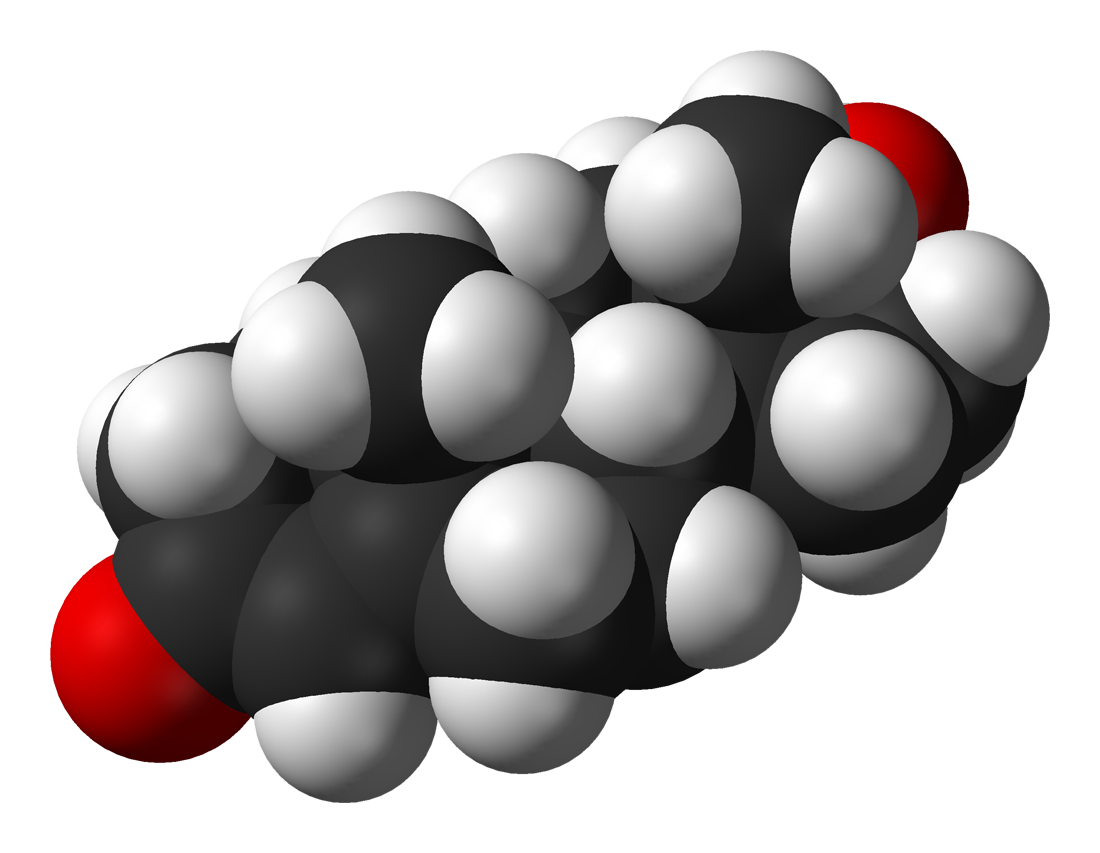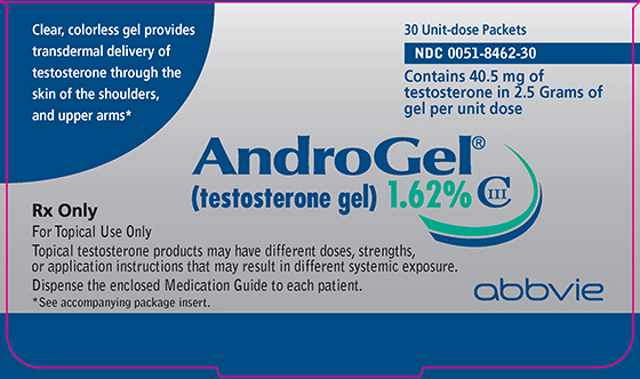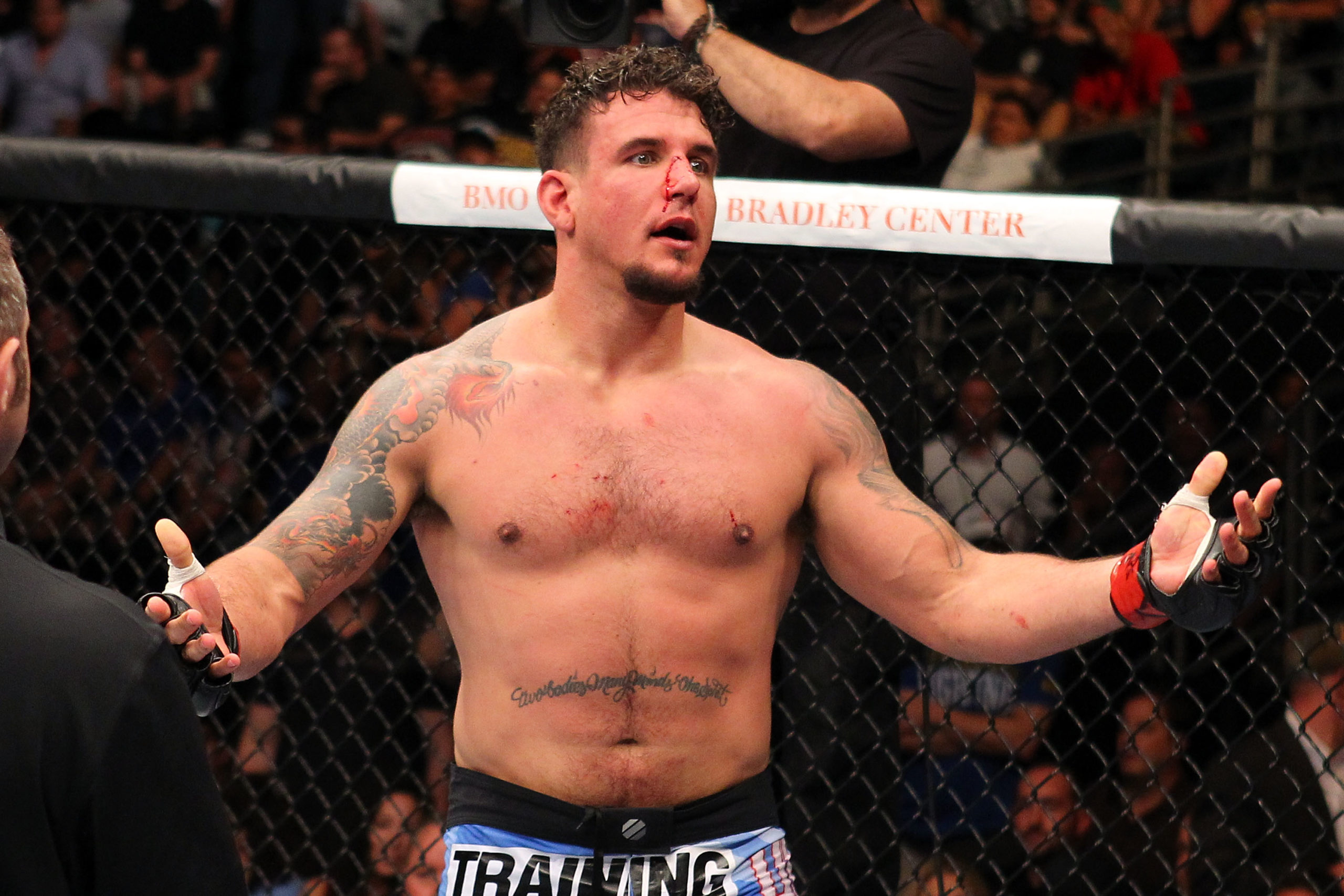One of the fastest growing areas in pharmacology today is testosterone supplementation in men. But while low-T is a genuine problem for some men, it’s not as prevalent as you may think — and the treatment is not without its risks. Here’s what men need to know about testosterone replacement therapy, and why it should only be used when absolutely necessary.
Art by Jim Cook
Millions of American men currently use a prescription gel, patch, or injection to restore their testosterone levels to “normal.” It’s a burgeoning medical trend, one fuelled partly by fresh scienctific research, but also by a plethora of ads telling men that, if they feel “sluggish” or “tired”, they should talk to their doctor. Companies like Abbvie, IMS Health, and Eli Lilly have jumped on the testosterone bandwagon, hoping to capitalise on the recent hype.
Indeed, low levels of testosterone, also referred to as symptomatic androgen deficiency, or, colloquially, “andropause” (yuck), is a serious problem for many men. It can cause disturbed sleep, declining muscle mass, low sex drive, and many other health problems. Many men see T-therapy as an indispensable and life-changing panacea. But research suggests it’s less prevalent than you may realise — and a growing body of evidence suggests it should not be prescribed lightly.
The Primary Male Sex Hormone
Testosterone is an androgen hormone and steroid that’s primarily produced in the testicles of men. Smaller amounts are produced in both men and women by the adrenal glands, while women can also produce small amounts in their ovaries.

Image: Ben Mills/CC
Testosterone is necessary for puberty in boys and for the onset of adult characteristics in males, including facial hair, a larger penis, prominent body hair, a deep voice, and the Adam’s apple. It also plays an important physiological and psychological role by helping to produce sperm cells and by contributing to libido, energy, muscle strength, and immune function (in both men and women).
To control the amount of testosterone that’s produced, the brain’s hypothalamus tells the pituitary gland how much to make. The pituitary gland then communicates this message by releasing hormones and chemicals, namely luteinizing hormone (LH), into the bloodstream.
Past the age of 30, however, most men experience a one-per cent decrease in testosterone production each year. It’s a part of ageing, but obesity and type 2 diabetes are also known to exacerbate the problem.
There’s disagreement among medical experts as to what constitutes a “healthy” level of testosterone for older men. Labs are known to vary reference numbers according to the average T-levels of young men, which can range anywhere from 300 to 900 nanograms per deciliter. It’s also important to note that the level of T in a man’s body changes throughout the day (it’s highest in the morning).
For men with problematically low levels, symptoms can influence mental, physical, and sexual performance. Here’s what men should look out for (a more detailed list is provided later in the article):
- Depression
- Reduced self-confidence
- Difficulty concentrating
- Disturbed sleep
- Declining muscle and bone mass
- Increased body fat
- Fatigue
- Swollen or tender breasts
- Flushing or hot flashes
- Lower sex drive
- Fewer spontaneous erections
- Difficulty sustaining erections
It’s important to note, however, that having one, or even several of these symptoms is not an indication of low-T. Lab tests are required to make that determination (more on that in a bit).
“General fatigue and malaise is pretty far down my list,” notes Brigham and Women’s Hospital Michael O’Leary in a Harvard Health Publications article. If a patient has significant symptoms, he says, it may warrant a lab test. But in most men, he notes, “the testosterone level is normal.”
A 2007, published in the Journal of Clinical Endocrinology and Metabolism, pins a percentage to O’Leary’s observation. Researchers led by New England Research Institutes’ Andre B. Araujo monitored the testosterone levels of close to 1500 men between the ages of 30 and 79 years of age. While close to 1 in 4 men had total testosterone less than 300 ng/dL, a much smaller percentage actually exhibited symptoms of low-T. Araujo notes that a more appropriate prevalence estimate should therefore also account for the presence of clinical symptoms. And when the researchers considered serum levels and clinical symptoms together, they got a much lower percentage:
Crude prevalence of symptomatic androgen deficiency was 5.6% (95% confidence interval: 3.6%, 8.6%), and was not significantly related to race and ethnic group. Prevalence was low in men less than 70 yr (3.1 — 7.0%) and increased markedly with age to 18.4% among 70 yr olds. Projection of these estimates to the year 2025 suggests that there will be as many as 6.5 million American men ages 30 — 79 yr with symptomatic androgen deficiency, an increase of 38% from 2000 population estimates.
T-Therapy
It was only recently that medical experts came to the realisation that testosterone therapy can be used to treat low-T. Previously, it was only applied to men with significant medical conditions, including exceedingly low levels of T or none at all. For example, it was used to treat Klinefelter’s syndrome, a genetic disorder in which men carry an extra X chromosome. It was also used to treat men who lost both testicles to trauma or cancer, or who had surgery to remove tumours from the pituitary gland or hypothalamus (which, as mentioned earlier, would have a serious impact on the brain’s ability to send the chemical signal to the testicles to produce testosterone).

Image: NIH/AndroGel
Today, T-therapy is used by millions of men to improve sexual desire, mood, energy, and sleep. It’s also beneficial for bone health and can be used as a supplementary treatment for osteoporosis to increase bone density.
It can also be used to treat weak erections. Testosterone controls the production of nitric oxide, the chemical signal in the penis that initiates erections. It’s also crucial for the maintenance of penile smooth muscle, which is responsible for control of blood flow into and out of the corpora cavernosa. Interestingly, T can be used as a treatment for erectile dysfunction (ED) if T levels are low, and it can also improve the response to Viagra in some men.
According to the FDA, 2.3 million people were prescribed T-therapy in 2013, which is up from 1.3 million in 2010.
Know the Risks
Testosterone replacement therapy is not without its risks. Though there is considerable disagreement over what those risks actually entail. Part of the problem is there hasn’t been enough time to perform long-term clinical studies. What studies have been conducted often give contradictory results.
For example, there’s considerable debate as to whether T-therapy contributes to prostate cancer in men. The evidence is mixed. Back in 2008, Harvard urology professor Abraham Morgentaler, an unabashed T-therapy proselytizer, penned a detailed report for Life Extension Magazine in which he sought to “destroy the myth” about T-replacement and prostate cancer. He writes:
For over sixty-five years, there has been a fear that testosterone therapy will cause new prostate cancers to arise or hidden ones to grow. Although no large-scale studies have yet been performed to provide a definitive verdict on the safety of testosterone therapy, it is quite remarkable to discover that the long-standing fear about testosterone and prostate cancer has little scientific support.
Morgentaler no longer fears that giving a man T-therapy will make a hidden prostate grow or increase his risk of developing prostate cancer. “My real concern now,” he writes, “is that men with low testosterone are at an increased risk of already having prostate cancer.”
As Morgentaler writes in his book, Why Men Fake It: The Totally Unexpected Truth About Men and Sex:
[As] the fear recedes that testosterone therapy will cause an epidemic of prostate cancer, there now is a reasonable hope for many men to be sexually active into their twilight years. That’s good news for their wives and partners, as well as for the men themselves.
That said, a brand new study has shown that testosterone promotes prostate cancer in rats, a finding that “could signal public health risks for men using testosterone therapy.”
Regardless, many physicians are now refraining from prescribing T-therapy for men who are also being treated for active prostate cancer. But most agree that it’s safe under careful supervision for those who truly need it.
There’s also the link between T-therapy and cardiovascular problems. Some studies have found that men on T-therapy have few cardiovascular issues, while other studies point to the opposite. It appears that older men are particular vulnerable to heart attacks and elevated blood pressure. And in fact, the 2010 Testosterone in Older Men study had to be halted once these findings became apparent. The 209 men in this trial were an average age of 74 and were already diagnosed with high rates of chronic diseases like cardiovascular disease and diabetes.
The problem is that T can increase hematocrit, the percentage of red blood cells in the bloodstream. When hematocrit gets too high, blood can become too thick, which can lead to a stroke or clotting events. Though no scientific study has conclusively established a link between T-therapy and elevated hematocrit, doctors are wary about giving T to men who already have a high level of hematocrit.
“I can’t tell you for certain that [T-therapy] raises the risk of heart problems and prostate cancer, or that it doesn’t,” notes Harvard Medical School’s Dr. Carl Pallais. “We need a large study with multiple thousands of people followed for many years to figure it out.”
And as Pallais notes, there’s the “testosterone trap” to consider: “Men get started on testosterone replacement and they feel better, but then it’s hard to come off of it. On treatment, the body stops making testosterone. Men can often feel a big difference when they stop therapy because their body’s testosterone production has not yet recovered.”
As a result, this therapy could be exposing men to risks that could add up and become issues over time.
There are also short-term side-effects to consider, including acne, disturbed breathing while sleeping, breast swelling or tenderness, swelling in the ankles, and high red blood cell counts.
Not For Everyone
In light of these risks, Endocrine Society’s Clinical Practice Guidelines state that testosterone therapy should only be prescribed to men “who have unequivocally low levels of the hormone and decreased libido, erectile dysfunction or other symptoms of hypogonadism, a condition that results from low testosterone.”
They say that testosterone therapy is suitable for men with symptomatic androgen deficiency to “induce and maintain secondary sex characteristics and to improve their sexual function, sense of well-being, muscle mass and strength, and bone mineral density.”
This professional organisation recommends testosterone therapy for men who have both low levels of testosterone in the blood (less than 300 ng/dl based on two morning samples) and symptoms of low testosterone. They put together this list of specific symptoms and signs indicating androgen deficiency in men:
- Incomplete or delayed sexual development (i.e. eunuchoidism)
- Reduced sexual desire (libido) and activity
- Decreased spontaneous erections (including “morning wood”)
- Breast discomfort (i.e. gynecomastia)
- Loss of body (axillary and pubic) hair, reduced shaving
- Very small (especially <5 ml) or shrinking testes
- Inability to father children, low or zero sperm count
- Height loss, low trauma fracture, low bone mineral density
- Hot flushes, sweats
Other less specific symptoms and signs include:
- Decreased energy, motivation, initiative, and self-confidence
- Feeling sad or blue, depressed mood, dysthymia
- Poor concentration and memory
- Sleep disturbance, increased sleepiness
- Mild anemia (normochromic, normocytic, in the female range)
- Reduced muscle bulk and strength
- Increased body fat, body mass index
- Diminished physical or work performance
At the same time, T-therapy is not recommended for men who have:
- Prostate or breast cancer
- A nodule on the prostate that can be felt during a DRE
- A PSA greater than 3 ng/ml without further evaluation
- A hematocrit greater than 50% or thick, viscous blood
- Untreated obstructive sleep apnea
- Severe lower urinary tract symptoms
- Class III or IV heart failure
T-Therapy Under the Microscope
Neither the popularity of T-Therapy nor the debate over its safety has gone unnoticed by the U.S. Food and Drug Administration, which is now seriously considering the need for stricter controls for the use of T-therapy. Late last year, a joint FDA advisory committee examined the therapy and its potential association with cardiovascular therapy, among other burgeoning issues and abuses.
Shockingly, for example, the committee discovered that, among a sample of nearly a quarter million men, as many as 21% had been given a prescription despite not being tested for low-T, while another 6% had claims submitted after receiving their initial prescription. That’s crazy when you consider that over 2 million people were prescribed T-therapy in 2013.
Compounding the problem is the fact that 57% of men on T-therapy are also taking either one or several other cardiovascular meds, such as anticoagulants, antihypertensives, anti-platelet therapies, statins, and nitrates. How these medicines work together in the body is not known.
After reviewing this and the mounting scientific evidence pointing to potential cardiovascular risks, the FDA voted 20-to-1 to revise the labels of T drugs, including AbbVie’s AndroGel and Lilly’s Axiron to make it abundantly clear that the products should only be prescribed to men who seriously need it. Indeed, many men, including athletes (both young and not-so-young), have been using T as way to counter ageing and boost performance.

The UFC’s Frank Mir: On T and granted a therapeutic use exemption (TUE). Some fighter complain that it confers an unfair advantage. Image: Yahoo! Sports
The committee also urged the FDA to require manufacturers to begin safety trials.
Interestingly, and as noted by Bloomberg, these concerns are having an effect on sales. For example, IMS Health’s sales have plummeted, dropping 6% in the first half of 2014 in the same period from the year before.
Looking ahead, the National Institutes of Health is sponsoring a short trial comparing men on T with those on a placebo. These results should be quite interesting, as they will include information about sexual function and bone health.
Keep all of this in mind the next time a TV ad tells you to “talk to your doctor about low-T.”
[ Why Men Fake It by Abraham Morgentaler [Harvard Health Publications [Endocrine Society’s Clinical Guidelines [Harvard Prostate Knowledge [Bloomberg [AARP [Life Extension Magazine [JAMA ]]
